*NURSING > EXAM > APEA 3P Exam Prep- Dermatology Questions with Correct Answers and Explanations (All)
APEA 3P Exam Prep- Dermatology Questions with Correct Answers and Explanations
Document Content and Description Below
APEA 3P Exam Prep- Dermatology Questions with Correct Answers and Explanations Impetigo is characterized by: honey-colored crusts. silvery scales. marble-like lesions. wheals with pus. A. Imp... etigo is a superficial bacterial infection of the skin characterized by honey-colored crusts. Another form of impetigo is characterized by the presence of bullae. These infections are treated with topical antibiotics, good hygiene, and frequent hand washing. It is usually caused by Staphylococcus or Group A Streptococcus. A patient was burned with hot water. He has several 2-3 cm fluid-filled lesions. What are these termed? Vesicles Bullae Cysts Wheals B. Bullae are fluid-filled lesions that are greater than 6 mm in diameter. These are common in patients who have a superficial partial-thickness burn. Vesicles are also fluid filled, but they are smaller than 5 mm in diameter. A cyst is enclosed in a sac that can contain fluid or gelatinous material. Wheals are erythematous, irregular raised areas on the skin. All of these are termed primary lesions. The best way to evaluate jaundice associated with liver disease is to observe: blanching of the hands, feet, and nails. the sclera, skin, and lips. the lips, oral mucosa, and tongue. tympanic membrane and skin only. B. Looking at the sclera allows the examiner to see jaundice most easily and reliably. Jaundice may also appear in the palpebral conjunctiva, lips, hard palate, undersurface of the tongue, tympanic membrane, and skin. Jaundice in adults usually is a result of liver disease, but it can be due to excessive hemolysis of red blood cells. In infants, the usual cause is hemolysis of red blood cells, as is seen in physiologic jaundice. The most common place for a basal cell carcinoma to be found is the: scalp. Face. Ear. Anterior shin. B. The most common presentation of basal cell carcinoma (BCC) is on the face. This is probably because BCC occurs secondary to sun damage. The most common sun exposure occurs on the face. In fact, 70% of BCC occurs on the face; 15% occurs on the trunk. [Show More]
Last updated: 2 years ago
Preview 1 out of 20 pages
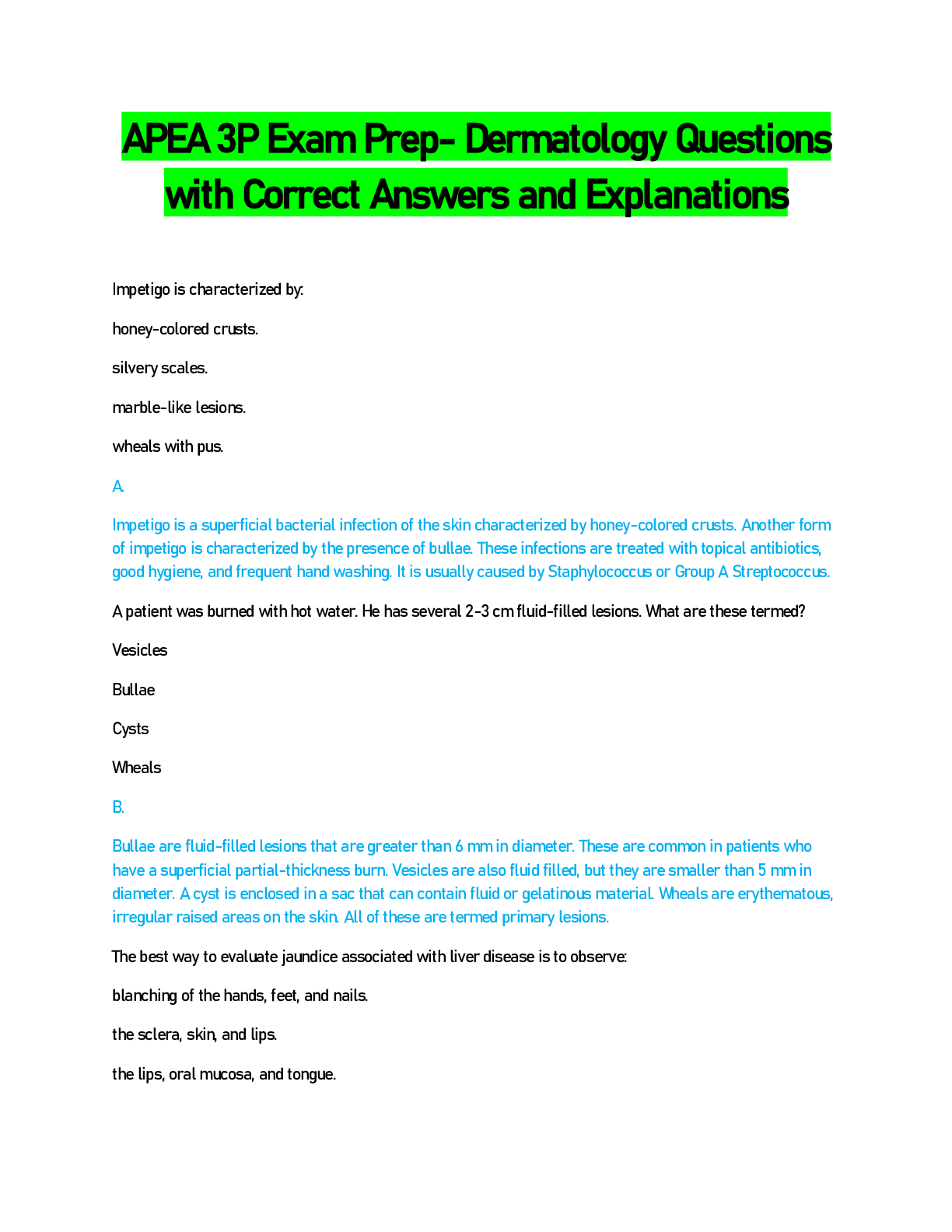
Buy this document to get the full access instantly
Instant Download Access after purchase
Buy NowInstant download
We Accept:

Reviews( 0 )
$11.00
Can't find what you want? Try our AI powered Search
Document information
Connected school, study & course
About the document
Uploaded On
Oct 27, 2022
Number of pages
20
Written in
Additional information
This document has been written for:
Uploaded
Oct 27, 2022
Downloads
0
Views
49

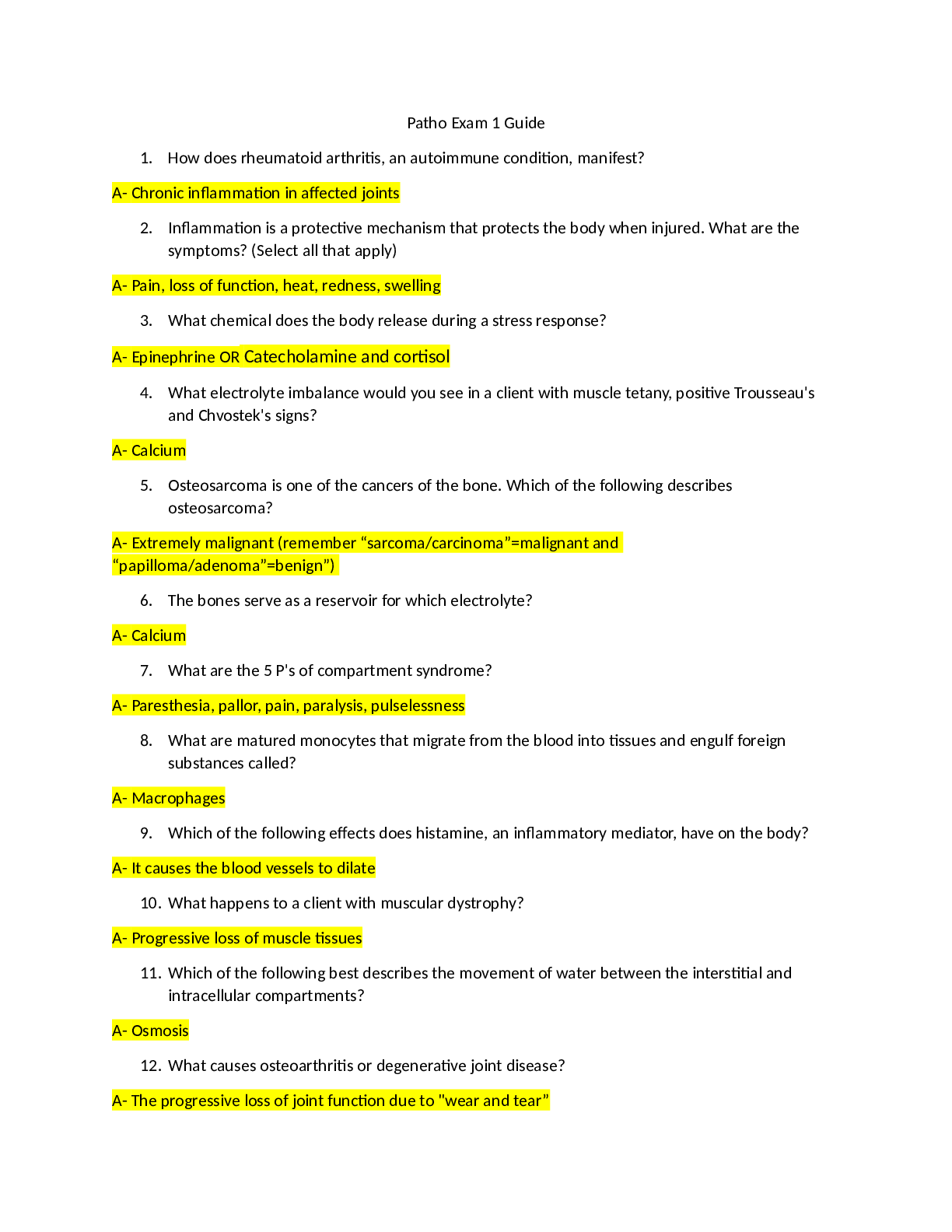
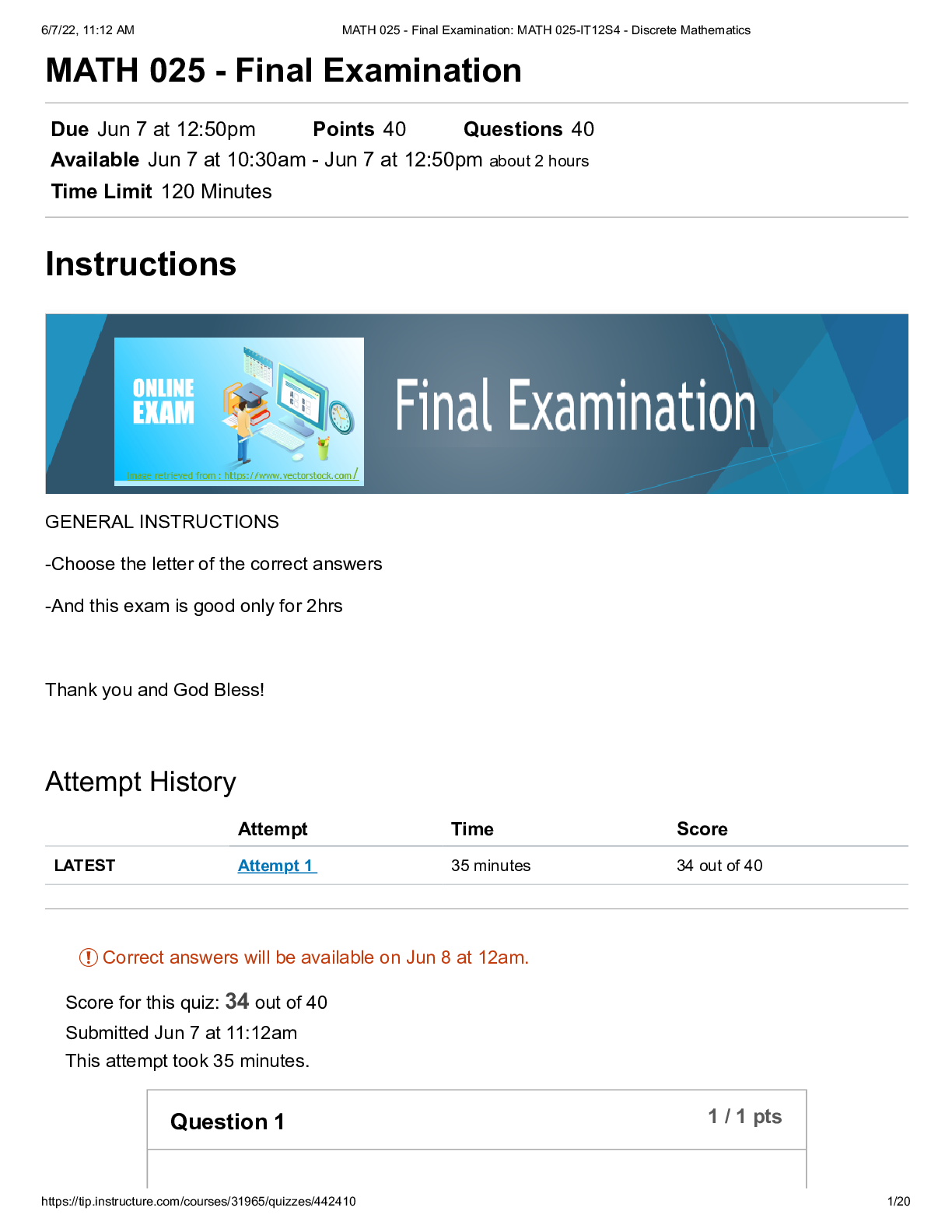
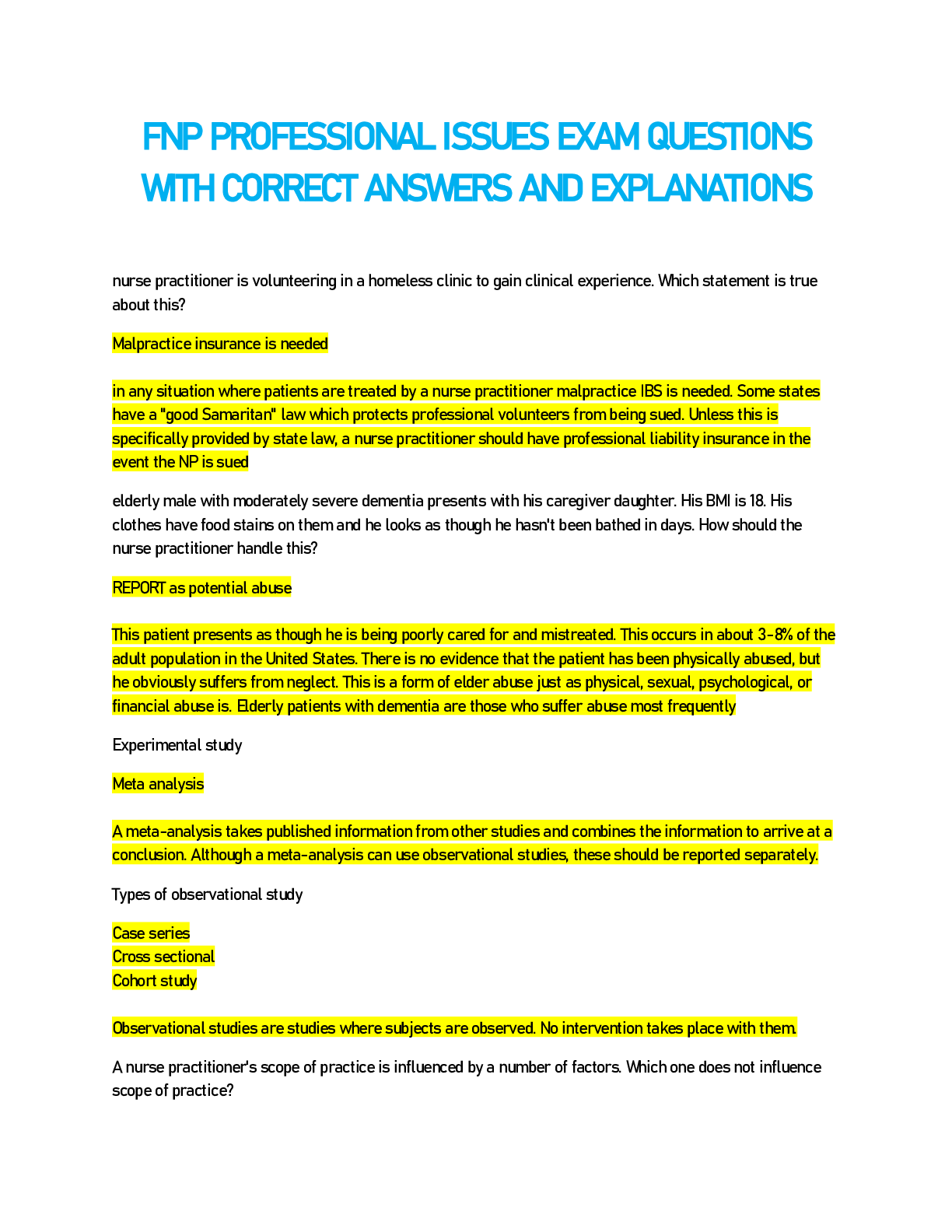

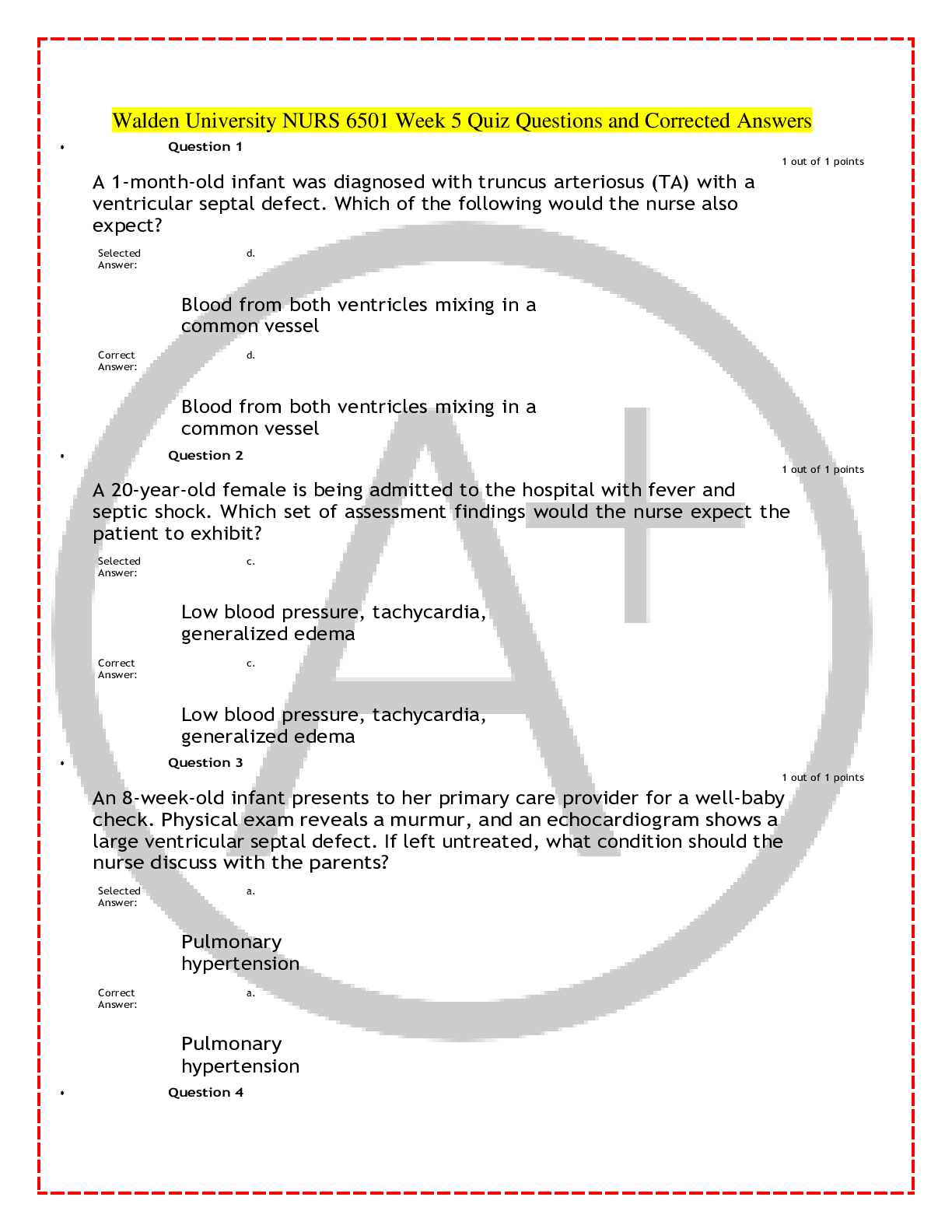
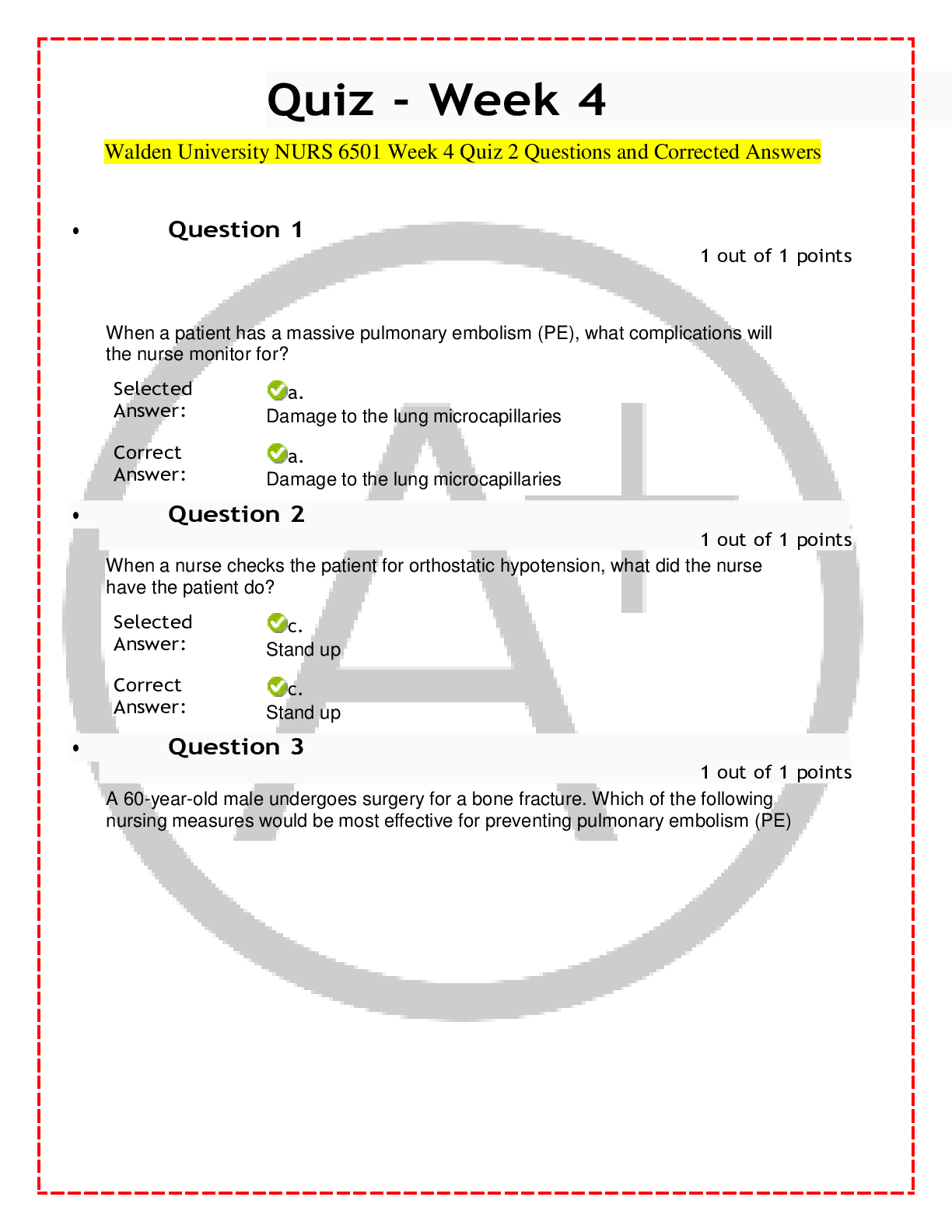

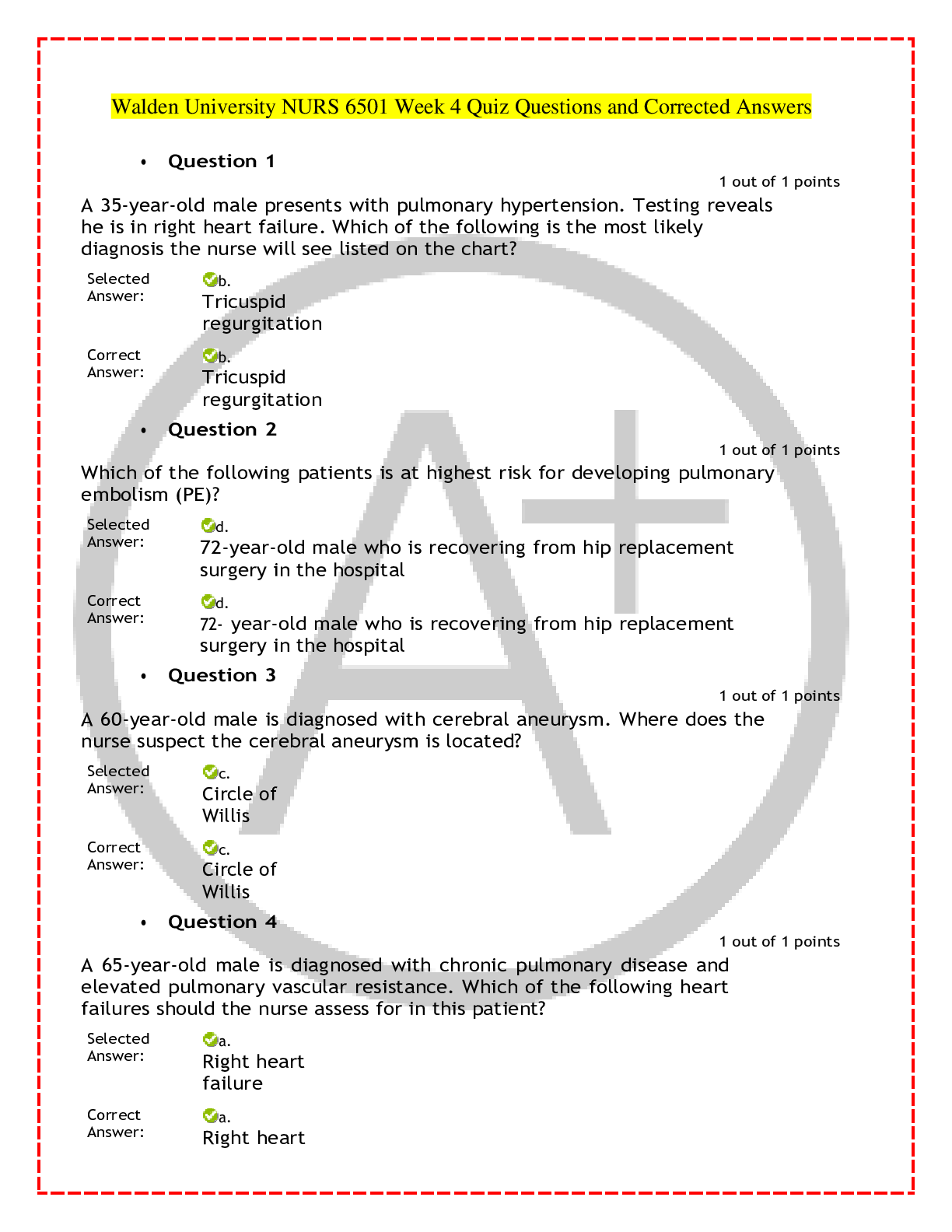









.png)
.png)
.png)
 – Chamberlain College of Nursing.png)
 – Chamberlain College of Nursing.png)
 – Chamberlain College of Nursing.png)
 – Chamberlain College of Nursing.png)

